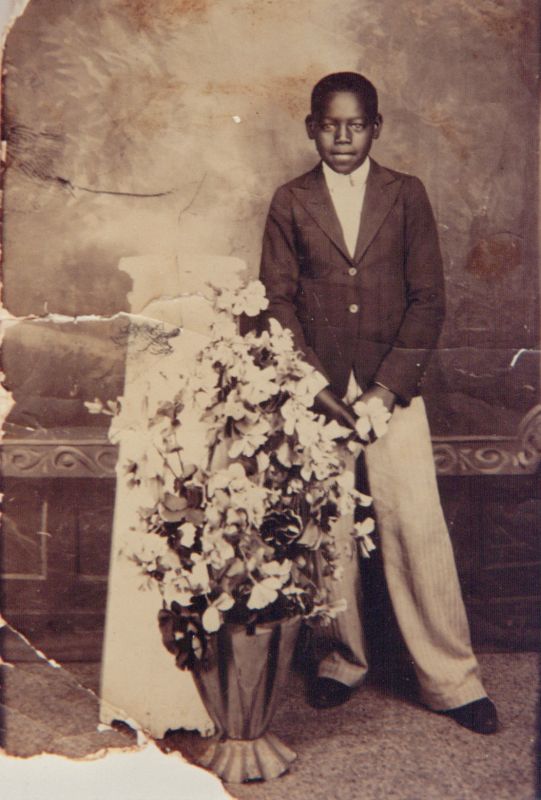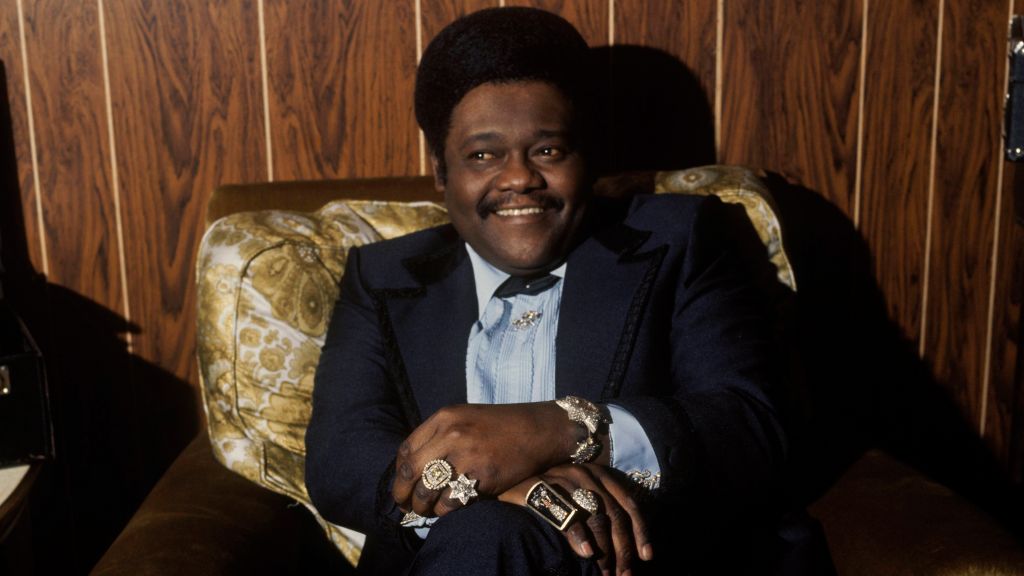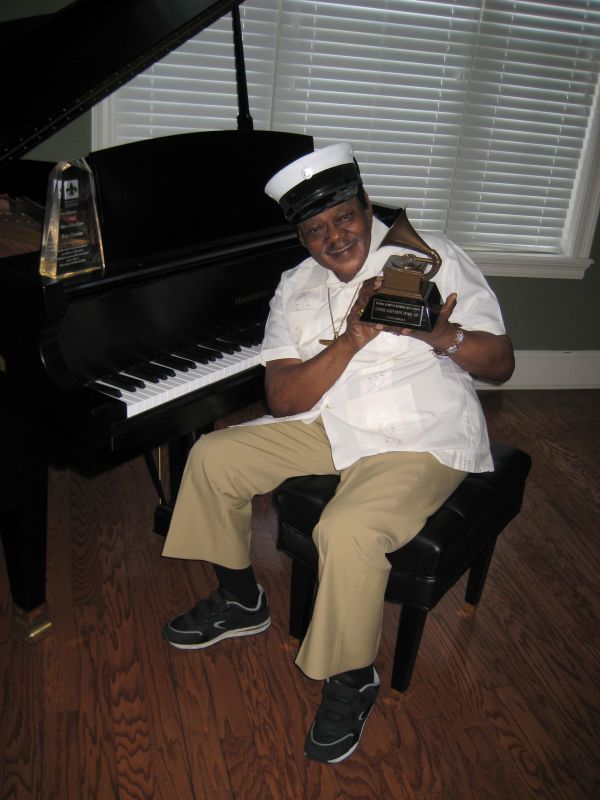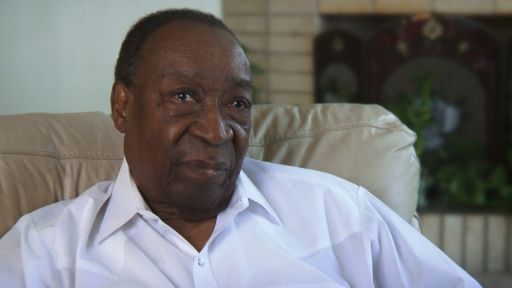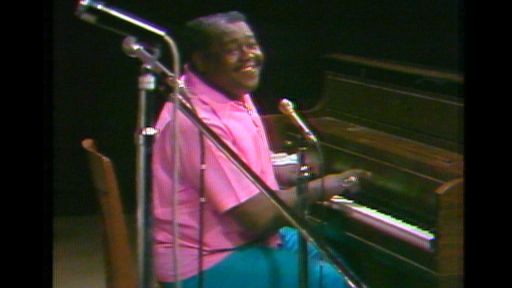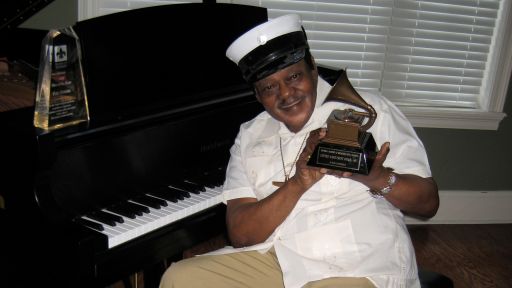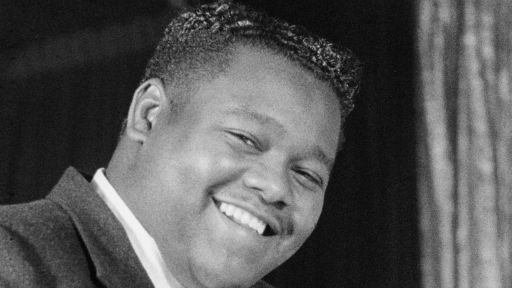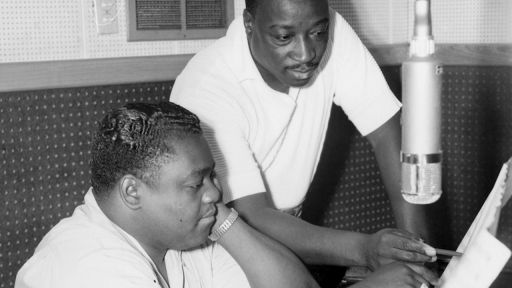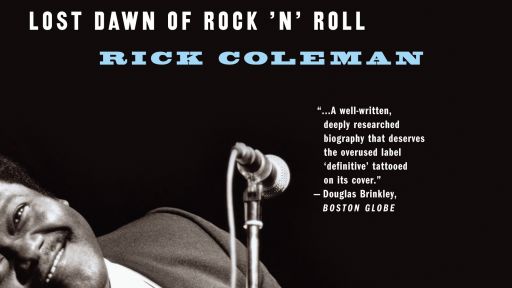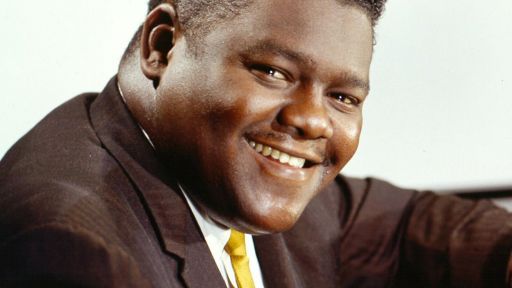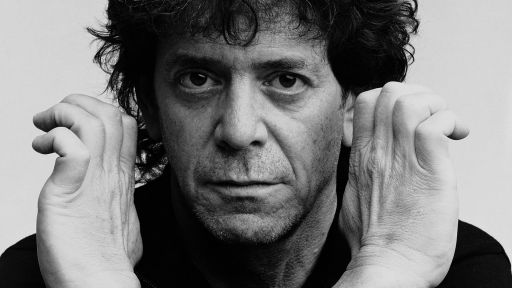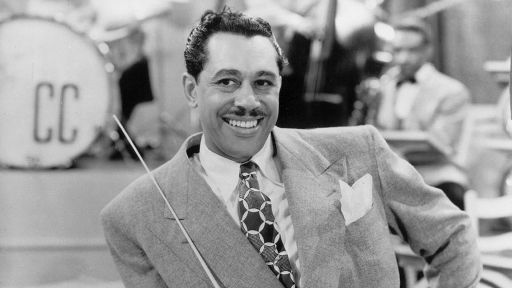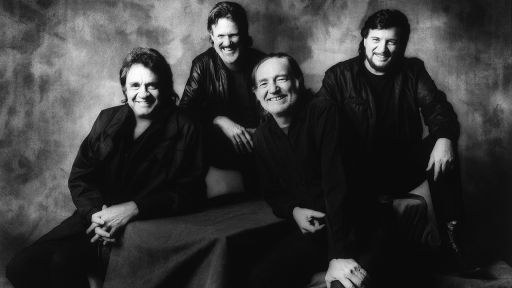Fats Domino: Timeline of His Life, Hits and Career Highlights
By Rick Coleman
February 26, 1928
Antoine Domino, Jr. is born in New Orleans to Antoine Calice Domino and Donatile (Gros) Domino. His midwife grandmother Carmelite Domino (who was born into slavery), delivers Antoine, the youngest of eight Domino children. He is the only one born in the city, after his family moved from the sugarcane fields of Vacherie, Louisiana.
Circa 1938
Someone gives the Domino family an old upright piano, and Antoine begins banging on it. His brother-in-law, Harrison Verrett, a guitarist and banjo player with Papa Celestine and other jazz bands, gives the boy piano lessons. Domino loves the piano so much he quits school in the fourth grade to play it more.
1947
Domino, who has played some neighborhood gigs with saxophonist Robert “Buddy” Hagans, plays piano at his sister Philomena’s fish fry and meets bandleader Billy Diamond, who hires Antoine for shows at clubs including the Robin Hood, where in 1948 he nicknames him “Fats” — Domino had put on a little weight after marrying Rosemary Hall, his lifelong spouse, on August 6, 1947.
1949
Domino forms his own band at the Hideaway Club on Desire Street, two blocks above Club Desire, where he had played with Billy Diamond’s band and also intermissions for Dave Bartholomew’s band. Producer, songwriter and bandleader Bartholomew (born December 24, 1920), and disc jockey Duke “Poppa Stoppa” Thiele, bring Lew Chudd, owner of Hollywood’s Imperial Record Company, to the Hideaway to see Domino and he immediately signs him to his label.
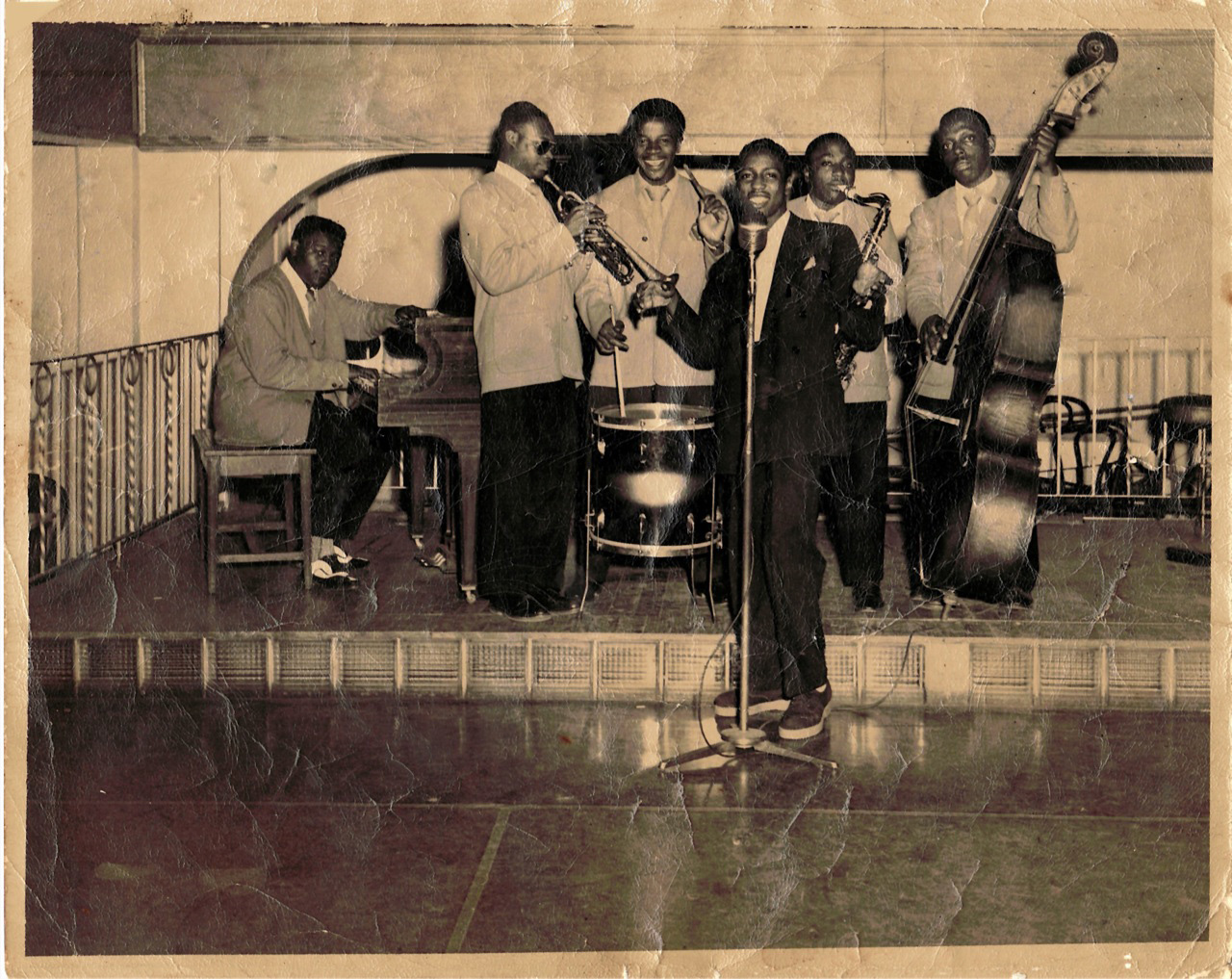
Fats Domino on piano with the Billy Diamond Orchestra at the Hideaway Club, New Orleans. Photo: Tracy Diamond Collection/Historic Films
December 10, 1949
After Bartholomew changes the name of the local blues standard “The Junker Blues” to “The Fat Man,” he brings Domino into the studio to record it at Cosimo Matassa’s J&M Studio on Rampart Street, with musicians including half-century Domino band mainstay, saxophonist Herbert Hardesty, and future Rock and Roll Hall of Fame drummer, Earl Palmer. Domino’s exuberant vocals and bombing piano backbeat power “The Fat Man” to #2 in the Billboard R&B chart in February 1950 and it becomes, arguably, the first rock ‘n’ roll record.
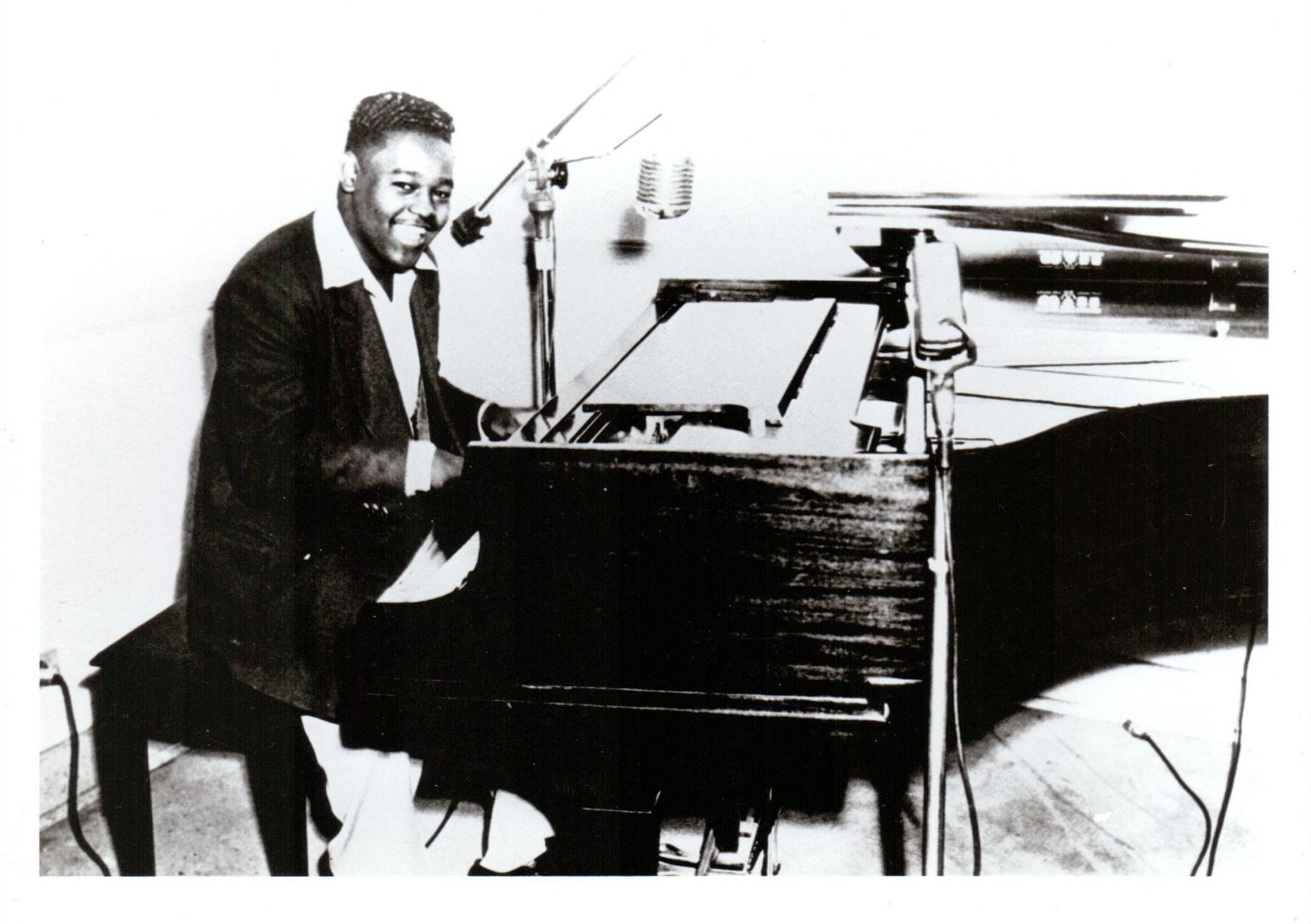
Fats Domino at at Cosimo Matassa J&M Studio in New Orleans, January 1950. Photo: Courtesy Rick Coleman Collection
1950
Fats travels with Dave’s band on two unsuccessful tours. He scores another top ten R&B hit in October with “Every Night About This Time,” which introduces his very influential piano triplets, which provide a slow-dancing background to many artists’ ballads of the next decade or so. After a Missouri snowstorm on their fall tour, Bartholomew is inspired to write “Blue Monday.” He comes home and has a financial falling out with Lew Chudd and quits Imperial Records.
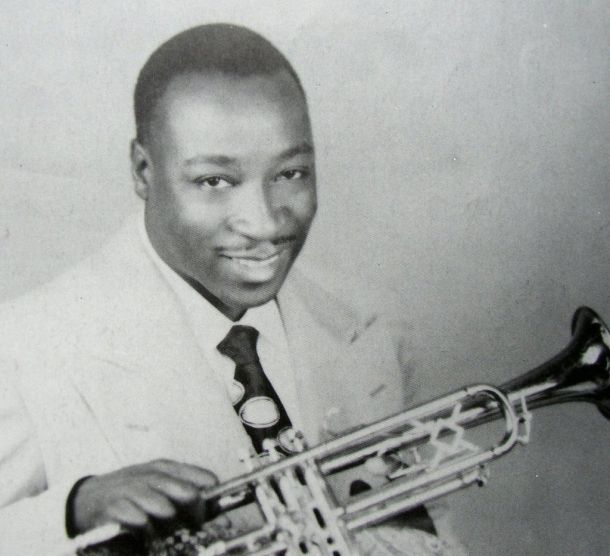
Dave Bartholomew, who co-wrote and produced most of Fats Domino’s hits. Photo courtesy Historic Music
1952
Domino scores his first R&B #1 with “Goin’ Home,” which he recorded with his own band, due to Dave’s departure. But Domino nonetheless sat in on a Bartholomew session in March, providing the impressive piano parts for the first recording by Lloyd Price — “Lawdy Miss Clawdy” on Specialty Records — which knocks “Goin’ Home” from #1 that July. Hearing Price’s record, Chudd makes up with Bartholomew, who soon produces hits primarily written by Domino— “Going to the River,” “Rosemary,” and “Please Don’t Leave Me,” all of which make the top ten in 1953.
1955
Domino adds saxophonist Herbert Hardesty, who provides solos and leads his band for over half a century. Fats records a flurry of hits in Hollywood and at J&M, including “Ain’t That a Shame,” which becomes Fats’ first major “rock ‘n’ roll” crossover hit with white audiences. Following a tame #1 pop cover version by Pat Boone, Domino’s booming record makes the pop top ten in July, becoming the first hard-rocking black record to cross over. Domino records other #1 R&B hits this year — “All By Myself,” “Poor Me,” and “I’m in Love Again.”
1956
Domino becomes a major “rock ‘n’ roll” star, leading the way for black rockers like Chuck Berry and Little Richard. He scores a major two-sided hit with “I’m in Love Again” and “My Blue Heaven,” which reaches #3 on the pop charts in the spring. He is attracting more and more whites to his show. Racial tensions, youthful delinquency, beer bottles, and dancing skirmishes lead to at least four major “riots” at Domino’s shows that year. Meanwhile Domino and his band suffer the hardships of segregation, sometimes traveling 100 miles or more out of their way to find a rooming house. In the midst of the riots, Fats scores his biggest all-time hit, a cover of the pop standard “Blueberry Hill,” that autumn, which reaches No. 2 in the pop charts and makes the Billboard top 25 of country hits. (Fats’ cover is ranked #82 in Rolling Stone magazine’s list of the 500 Greatest Songs of All Time.)
Domino appears on The Ed Sullivan Show on November 18 singing it by himself at the piano (Sullivan hides the rest of his band to reduce the number of black men seen). He also has Domino stand up at the end of the song, apparently to emphasize his roly poly figure, beginning the pianist’s “harmless” myth.
Fats’ “Blue Monday,” originally written by Dave Bartholomew for Smiley Lewis, reaches No. 5 on the Billboard Top 40 charts and No. 1 on the R&B Best Sellers chart. The song and Fats Domino himself appear in the film The Girl Can’t Help It, a rock music comedy starring Jayne Mansfield, released in December. That followed on the heels of Domino’s appearance in the film Shake, Rattle & Rock (November release).
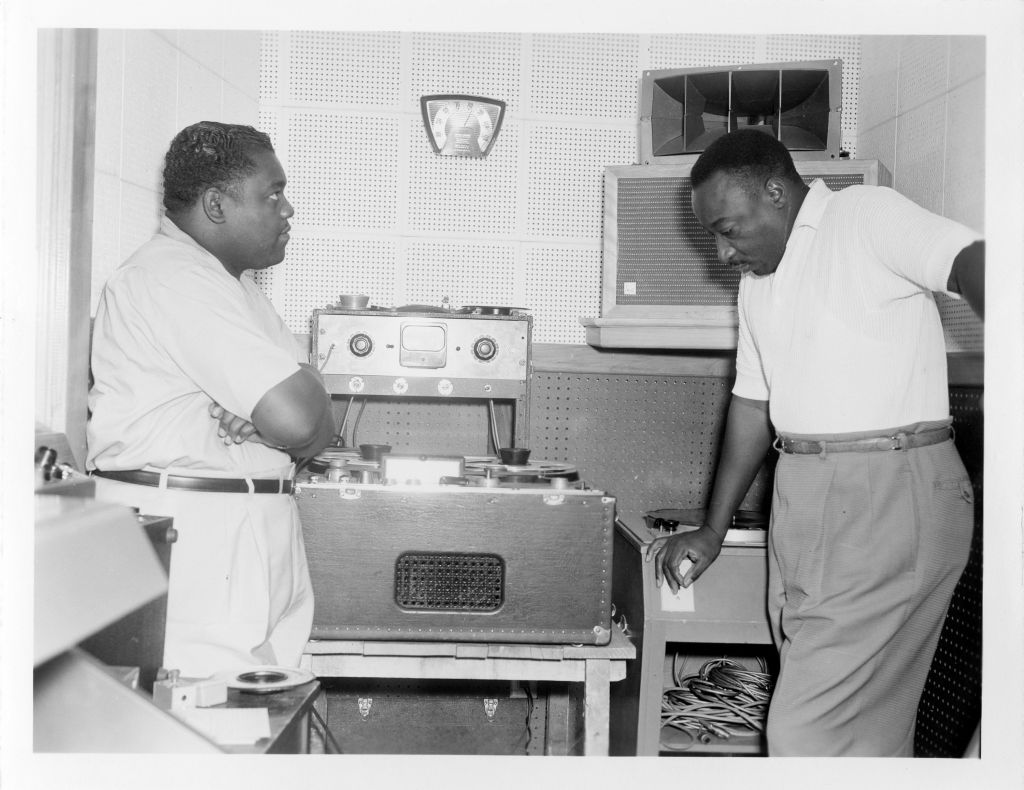
(l to r) Fats Domino and Dave Bartholomew, producer/songwriter/bandleader and longtime collaborator, who co-wrote and produced most of Fats’ hits, at J&M Studio, 1956. Photo courtesy Charles L. Franck/Franck Bertacci Photograph Collection/Historic New Orleans Collection
1957
By 1957 Domino is one of the most popular musicians in the country, second only to Elvis Presley in rock ‘n’ roll. Fats headlines the biggest shows in rock ‘n’ roll history to date — Irvin Feld’s 80-day Biggest Show of Stars tours in the spring and fall and Alan Freed’s New York Paramount shows at the end of the year. The artists Domino headlines over include Chuck Berry, Buddy Holly, the Everly Brothers, and Jerry Lee Lewis. Fats Domino’s tour dates also attract much attention because many venues had never had whites and blacks in the same audience. Fats said the band would sometimes have to go 100 miles out of their way to find lodging that would take African Americans.
On December 18, his song “The Big Beat” is featured on Dick Clark’s American Bandstand.
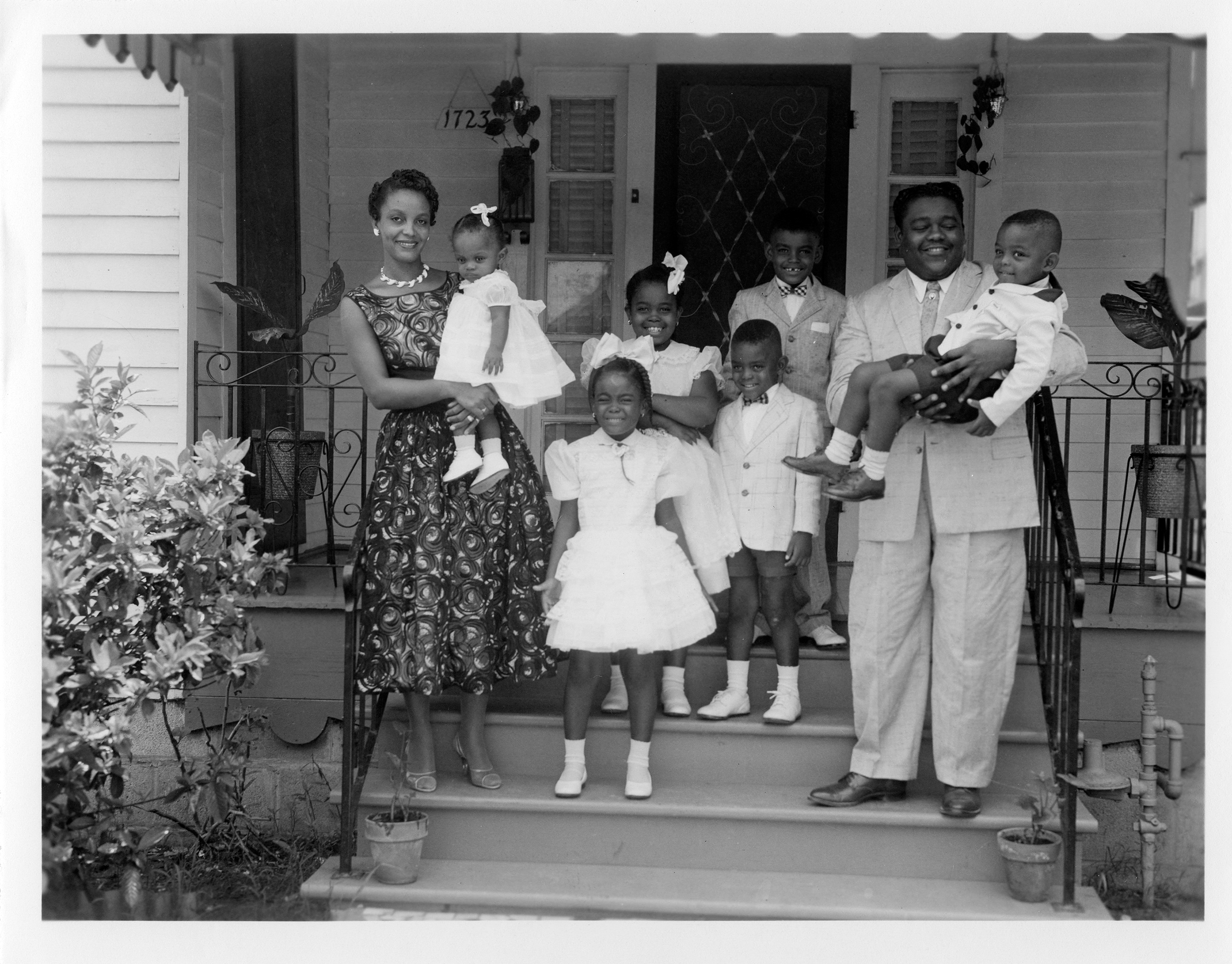
Fats Domino (right), his wife Rosemary (left) and their children. Photo courtesy Charles L. Franck/Franck Bertacci Photograph Collection/Historic New Orleans Collection, Historic Films
1959
After a slight slump in 1958, Domino returns strong with several rockers, including “Whole Lotta Loving,” “I’m Gonna Be a Wheel Someday,” and “I’m Ready.” The latter he frenetically performs on June 28 on Dick Clark’s The Record Years, proclaiming that he is “ready, willing, and able to rock ‘n’ roll all night” when virtually all other rockers are missing from the hit parade. Domino also hits with “Be My Guest,” which become a key inspiration for Jamaican ska, and his biggest record of the year, “I Want to Walk You Home.”
1960
Domino builds a $200,000 luxury home in his poor Lower Ninth Ward neighborhood in New Orleans. He scores a big hit with an anthem to his hometown, Bobby Charles’ “Walking to New Orleans,” which significantly features strings. There is turmoil at his home, as his wife Rosemary, not liking his new rich “star” lifestyle, temporarily separates from him, while Ruby Bridges becomes one of the first black girls to integrate local nearby Ninth Ward schools. Someone who mistakenly believes that Domino’s daughters (who attended Catholic schools) are among these girls sends a bomb threat to his home.
1961-1962
Fats tours Jamaica in early 1961, where he is treated like a king by future ska and reggae stars, whom he heavily influenced. His last top 15 hit is Bartholomew’s “Let the Four Winds Blow,” but he also scores with Hank Williams’ “Jambalaya” and “You Win Again,” all three of which he performs on March 4, 1962 on The Ed Sullivan Show. In July he makes his first European appearance at the Antibes Jazz Festival in Juan-les-Pins, France, before ecstatic crowds; the show is filmed for posterity and features a classic Domino band line-up, including Dave Bartholomew (trumpet); Herbert Hardesty, Lee Allen, Clarence Ford, and Robert “Buddy” Hagans (saxophones); Roy Montrell (guitar —replacing Walter “Papoose” Nelson, who overdosed on heroin five days before the Ed Sullivan appearance); Jimmy Davis (bass), and Clarence “Tenoo” Coleman (drums). In October Domino tours France and Germany. Returning to the U.S., he begins his first stay at the Flamingo Hotel, the first of scores of stays at Las Vegas hotel casinos in the next two decades.
1963
Domino leaves Imperial Records for ABC-Paramount. Lew Chudd, having recently also lost Rick Nelson, the third biggest selling rock ‘n’ roll artist after Elvis and Fats, sells his label. Domino records for ABC in Nashville, where his New Orleans sound does not come through; he scores only one top 40 for the label, the string-laden “Red Sails in the Sunset.” Rock ‘n’ roll is about to change direction with the British Invasion, whose musicians, particularly the Beatles, were influenced by Fats.
1967-1968
Without a hit record in years, Fats still has a very successful week-long stay at the Saville Theatre in London. Brian Epstein, the Beatles’ manager, books him there and Paul McCartney secretly attends one show in the midst of recording Sgt. Pepper’s Lonely Hearts Club Band. The first song John Lennon ever learned to play on guitar was Domino’s “Ain’t That a Shame,” while the first rock ‘n’ roll record George Harrison ever heard was “I’m in Love Again”; McCartney soon writes and records “Lady Madonna” in Fats’ style and will record several Domino songs in later years. In 1968 Domino covers “Lady Madonna” for Reprise and scores a minor hit, and headlines several “rock ‘n’ roll revival” concerts.
1970s-1980s
Domino travels the world, making almost yearly tours to Europe, where he is an icon. His band often includes New Orleans greats Dave Bartholomew, Herb Hardesty, and Lee Allen. His shows, in which he closes by bumping his piano across the stage, also become iconic. He rarely records, though the album Sleeping on the Job becomes a minor hit in Europe in 1979. In 1980 Fats appears in Clint Eastwood’s hit movie Any Which Way You Can performing (in a cowboy hat) “Whiskey Heaven,” which becomes a small country hit.
1986
Fats Domino is one of the first ten inductees into the Rock and Roll Hall of Fame.
1987
“Blueberry Hill” enters the Grammy Hall of Fame. Domino receives the Grammy Lifetime Achievement Award with Bartholomew at his side, though they had recently had a falling out, which ended Dave’s tours with Fats.
1991
Dave Bartholomew is inducted into the Rock and Roll Hall of Fame.
1995
Domino receives the Rhythm & Blues Foundation’s Ray Charles Lifetime Achievement Award in Los Angeles in March. That spring he makes his last tour a three-week tour in Europe. He comes home sick and swears off touring.
1998
President Bill Clinton awards Domino a National Medal of Arts; Domino is by this time such a homebody that he sends his daughter Antoinette to receive the award.
2004
The Rolling Stone list of the “100 Greatest Artists of All Time” ranks Fats Domino #25.
August 2005
During Hurricane Katrina, Fats Domino is rescued from his heavily flooded home in New Orleans. During this time and in the next year he receives the most worldwide publicity he has received in decades.
2006
Domino’s final album, Alive and Kickin’ is issued. He appears on stage, but fails to play due to illness, in May at the New Orleans Jazz and Heritage Festival. His biography Blue Monday: Fats Domino and the Lost Dawn of Rock ‘n’ Roll by Rick Coleman is published. On the one-year anniversary of Katrina, President George W. Bush and his wife present Fats with a replacement National Medal of the Arts medal for the one he lost in Katrina.
2007
The double CD Goin’ Home: A Tribute to Fats Domino is released, featuring covers of Domino songs by John Lennon, Paul McCartney, Tom Petty, Elton John, Robert Plant, Norah Jones, Allen Toussaint, Buddy Guy, Doctor John, Robbie Robertson, Randy Newman, Neil Young, Willie Nelson, among others. On May 19, Fats Domino performs publicly for the last time at Tipitina’s in New Orleans.
October 2012
Fats Domino is featured in season three of the television series Treme, playing himself.
2015
Domino’s song “The Fat Man” enters the Grammy Hall of Fame.
____
Rick Coleman has been writing about New Orleans music for the past 35 years, with his work appearing appearing locally and in Rolling Stone and Billboard. His book Blue Monday: Fats Domino and the Lost Dawn of Rock ‘n’ Roll (2007) won the ASCAP Deems Taylor-Timothy White award for outstanding musical biography. He is working on an extensive history of New Orleans music.

